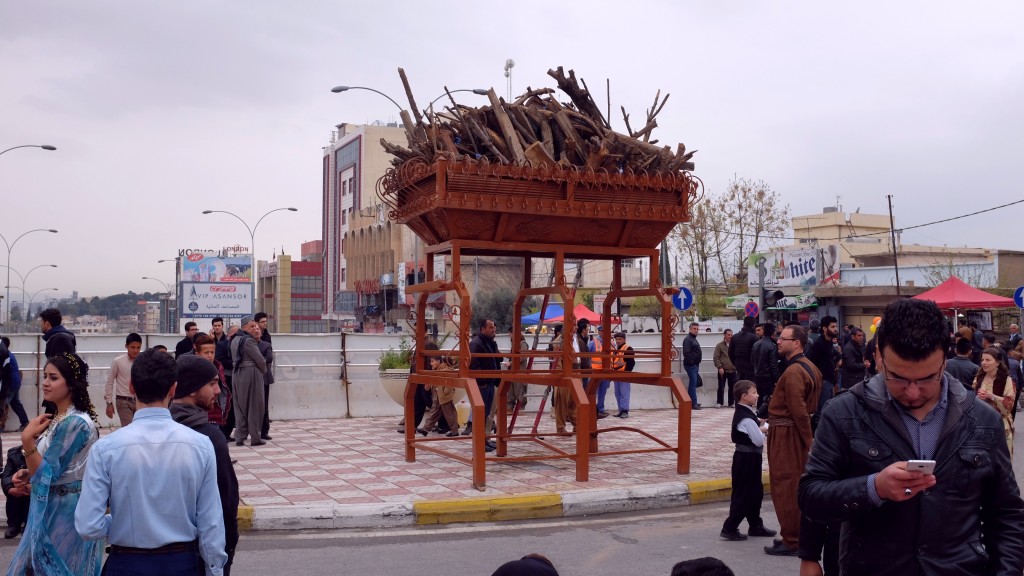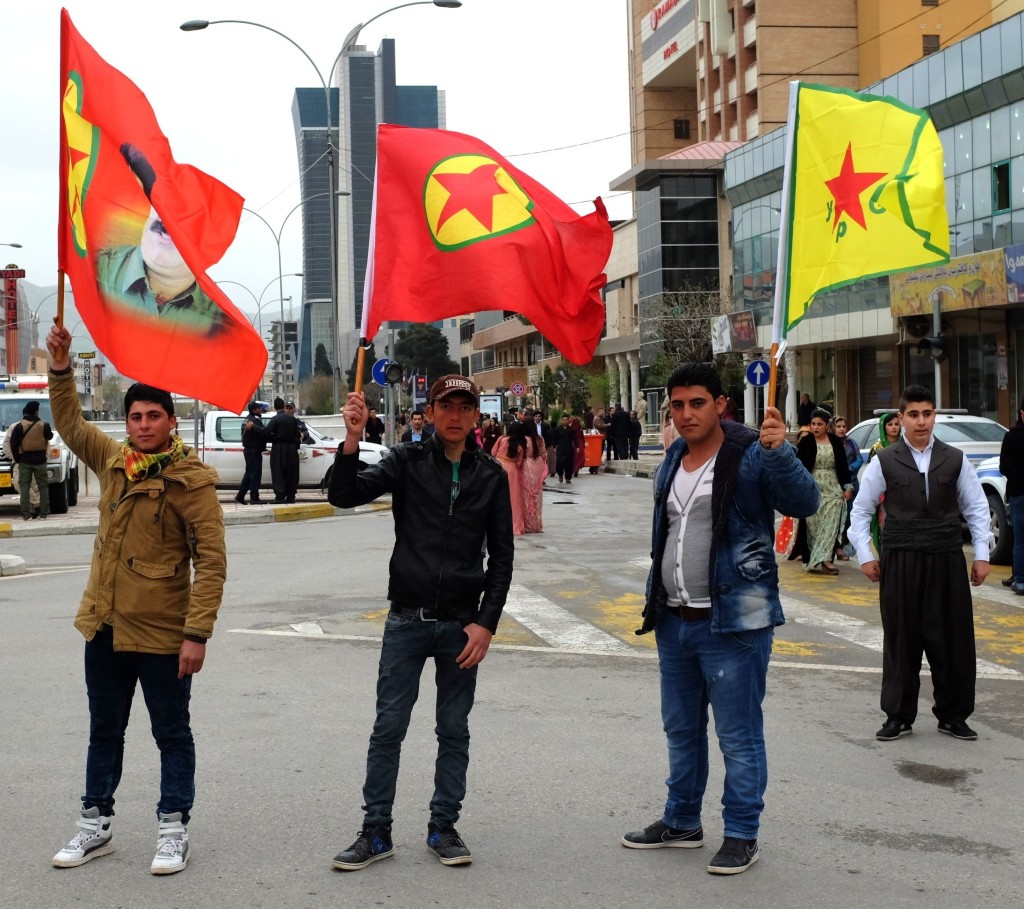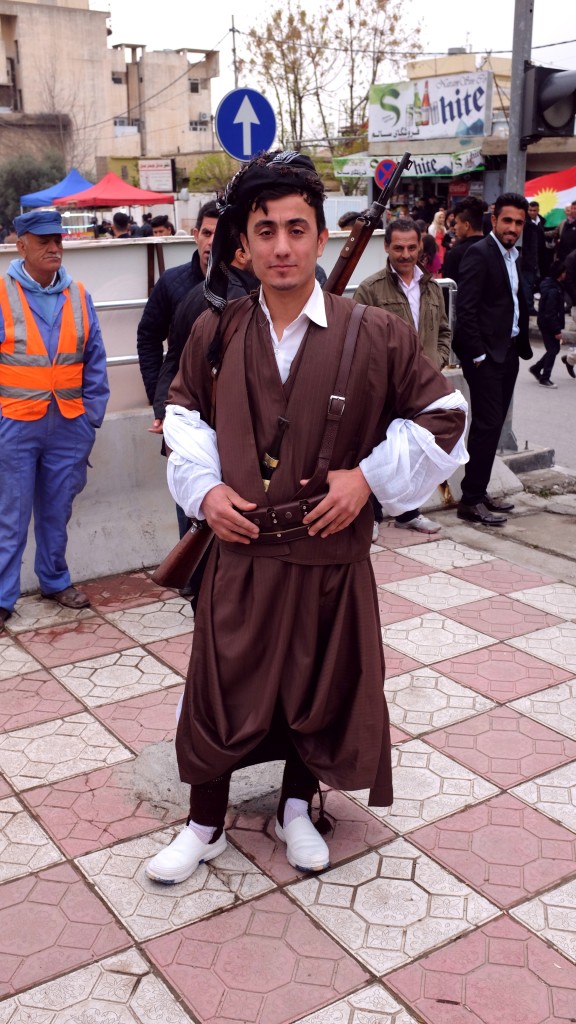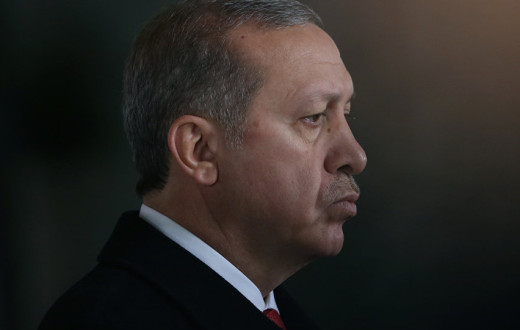Newroz is the New Years of Iranian calendar. This year’s celebration marks the 2716th year in the Persian calendar. Its celebration means much to the Kurdish people, particularly now when the Kurdish question is forcing its way into international politics unlike ever before. In Bakur-also known as Northern Kurdistan, or Turkish Kurdistan-Kurdish rebels are continuing their decades long struggle against the Turkish army. In Rojava, Western Kurdistan, or Syrian Kurdistan Kurdish fighters and their allies are fighting against ISIS and recently declared a federal zone within Syria. Rojhilat, Eastern Kurdistan, or Irani Kurdistan is comparatively peaceful, but militant Kurdish groups still fight for Kurdish independence. In Bashur, Southern Kurdistan, or Iraqi Kurdistan the Kurdish Regional Government has achieved autonomy from the rest of Iraq, and the local political sphere is split between the ruling KDP, a center right party with close ties to Turkey, and the progressive center-left PUK. Though Bashur has autonomy from Baghdad, it is still under immense pressure from both ISIS and internal strife.
Regardless of each region’s politics, the celebration of Newroz connects Kurds across borders in a celebration of Kurdish resistance, unity, and identity. Its origins stem from the legend of the uprising against Zahhak, a tyrant that ruled in the Middle East for a thousand years. According to the tradition, on March 20th Zahhak was killed by Kawa, who then set fire to the local hills in celebration which then brought back Spring for the first time since Zahhak’s rule started, hence Newroz being celebrated on the Spring Equinox. Having folklore such as this fits in with modern Kurdish struggle for independence, as they have been fighting for an independent Kurdistan since the Sykes–Picot Agreement cheated the Kurds out of a united Kurdistan. This is in the Kurdish national anthem, which emphasizes the martyrs and struggle of the Kurdish cause.
We are descendants of the red banner of the revolution
Look at our past, how bloody it is
Let no one say Kurds are dead, they are living
They live and never shall we lower our flag-excerpt from the Kurdish national anthem
With its cultural meaning, Kurdish celebrations of Newroz are inherently political actions. For this reason, Turkey actively tries to prevent its celebration, only legalizing the holiday in 2000. The past year saw the resurgence of the Kurdish fight for independence against the Turkish state after the breakdown of a two and a half year long peace process. Since then, many Kurdish cities in Turkey been placed under curfew by Turkish security services for up to two weeks in order to fight local Kurdish militias, where human rights violations and civilian targeting have been rampant. In continuation of these tactics, this year the Turkish government banned Newroz celebrations under the excuse of keeping the peace, but the HDP (the main Kurdish party within Turkey) vowed to go ahead with the celebrations. This resulted in the violent dispersal of some peaceful celebrations.
The celebrations in Bashur have a different political significance. While the region is currently peaceful away from the front lines of the conflict, the effects of the conflict with ISIS are visible. Many IDPs and Syrian refugees are seen on the streets and fake military uniforms have become casual outfits. There have been many recent protests against the KDP over poor governance and withheld pay, which has alienated many from the nationalist KDP whose opponents accuse it of working towards a Kurdish nation state confined to Iraqi Kurdistan. This has led to increased local support for the PUK and Goran parties, which are more sympathetic towards the ideology of the revolutionary Kurdish groups in Rojava and Bakur. This ideology is Democratic Confederalism, which seeks to unify Kurdistan through an ideology of local democratic councils federated into a loose grouping forming a united Kurdistan .
This push can be observed in Sulaymaniyah, which is the stronghold of support for the Goran party. With the region in a seemingly never ending cycle of turmoil, this year’s Newroz celebrations had ever-present signs of a history of struggle within a divided Kurdistan, as well as signs of the militant resistance that has become inseparable from Kurdish culture. Previous years were reported to have armed YPG/YPJ fighters in a military parade, as Sulaymaniyah is very supportive of left wing Kurdish militias. This year, the military parade was not present. Instead, locals celebrated as they normally do-wearing traditional dress with a festival like atmosphere on Sulaymaniyah’s main boulevard. Despite the absence of Kurdish guerrillas, the connection between tradition and armed struggle was inescapable , from armed men in traditional garb to women in camouflage patterned dresses.
This piece was a joint collaboration between Guy Steward and Hristo Voynov. You can find more photos of the event below.






















0 comments